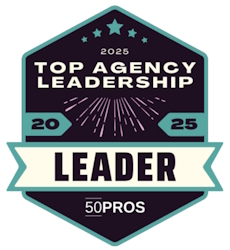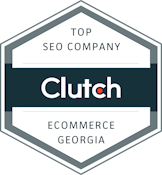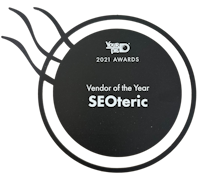A/B Testing for Search Marketing Success: Laying the Foundation
A/B testing refines search marketing strategies by comparing different versions of ads, landing pages, or keywords to identify the best performer. Establishing clear objectives and selecting variables to test allows marketers to base decisions on real user behavior rather than guesswork. Segmenting audiences ensures tests are relevant and results meaningful, while reliable tools simplify experimentation and provide accurate data. This method improves campaign effectiveness and user experience, leading to higher return on investment.

Emerging trends like AI-driven experimentation and hybrid testing models are changing how A/B tests are conducted. Tools such as Google Optimize, Optimizely, and VWO offer advanced features that simplify complex testing. As noted in the Search Engine Land article “A/B Test Your Way to Search Marketing Success,” “A well-structured A/B test can transform assumptions into actionable insights, driving measurable growth.” This guide explores strategies and tools to help marketers maximize A/B testing in search marketing.
Understanding the Mechanics of A/B Testing in Search Marketing
A/B testing involves creating two or more variations of a marketing element—such as ad copy, landing page design, or keyword sets—and exposing them to different audience segments to determine which performs better. The process starts with defining clear, measurable objectives aligned with campaign goals, such as increasing click-through rates, conversions, or reducing bounce rates. Without focused goals, insights can become diluted or misleading.
Choosing variables to test requires understanding which elements most influence user behavior, including headlines, call-to-action buttons, page layouts, or keyword targeting. Segmenting audiences by demographics, device type, or user intent tailors tests to reveal meaningful differences rather than random fluctuations. This approach uncovers how different groups respond uniquely, providing deeper insights for future campaigns.
Testing tools impact the accuracy and efficiency of experiments. Platforms like Google Optimize, Optimizely, and VWO offer features for setting up tests, tracking interactions, and analyzing results with statistical confidence. AI-driven experimentation automates identifying winning variants and optimizes tests in real time, reducing manual effort. Hybrid models combining A/B and multivariate testing explore complex interactions between variables, offering richer performance insights.
Analyzing A/B test data requires balancing statistical rigor with practical interpretation. Beyond surface metrics, it’s important to consider effects on user experience and long-term engagement. Successful tests often reveal unexpected insights that challenge assumptions, enabling data-driven decisions that improve ROI and create more relevant, engaging experiences.
Maximizing Search Marketing Impact Through Strategic A/B Testing
Effective A/B testing begins with setting specific, measurable goals aligned with desired outcomes like increased engagement or conversions. Identifying which elements to test—such as headline phrasing, call-to-action placement, or landing page design—depends on understanding user behavior and decision factors. This targeted approach ensures experiments deliver insights that directly inform optimization.
Audience segmentation recognizes that different user groups respond differently to variations. Dividing traffic by demographics, device usage, or search intent uncovers nuanced patterns hidden in aggregate data. This sharpens test accuracy and helps tailor marketing messages to resonate with distinct segments, enhancing user satisfaction and campaign performance.
Testing tools simplify experiment setup, monitoring, and analysis. Innovations in AI-driven experimentation accelerate identifying winning variants, reducing time and effort. Hybrid techniques blending A/B and multivariate testing enable exploration of multiple variables simultaneously, deepening understanding of what drives engagement and conversions.
Interpreting test data requires contextual insight beyond statistical significance. Effective analysis often uncovers unexpected findings that challenge assumptions, supporting smarter, data-backed decisions. This iterative process fosters continuous improvement, leading to higher ROI and a more compelling user experience.
Frequently Asked Questions About A/B Testing for Search Marketing Success
Which elements should be tested?
Focus on variables that directly influence user behavior and conversion metrics, such as ad copy, call-to-action phrasing, or landing page layouts. Avoid testing too many variables at once to maintain clarity on what drives performance changes. Prioritize tests based on hypotheses informed by user data or past campaigns.
How long should tests run, and what sample size is needed?
Tests should run long enough to capture a representative audience sample and account for behavior variations across days or times. Statistical significance is important, but also consider the practical impact and alignment with campaign goals. Patience and monitoring prevent premature conclusions.
How to interpret conflicting or inconclusive results?
Conflicting outcomes may indicate different responses among audience segments, highlighting the value of segmentation. Revisit objectives and consider external factors like seasonality or competitor activity. Even inconclusive tests provide insights to guide further experimentation.
What role do automation and AI play in A/B testing?
Automation and AI speed up identifying winning variants and optimize tests in real time. However, human judgment remains essential for interpreting user behavior nuances and aligning results with strategic goals. Combining automated insights with audience understanding creates a balanced approach.
Harnessing the Power of A/B Testing for Smarter Search Marketing
Thoughtful A/B testing moves marketers beyond assumptions to actionable insights that improve campaign performance and user experience. Clear goals, careful variable selection, audience segmentation, and appropriate tools contribute to meaningful results. Innovations like AI-driven experimentation and hybrid testing enhance optimization efficiency. A/B testing is an ongoing process of learning and adapting to create more relevant, engaging, and successful search marketing campaigns.
Read the original article on Search Engine Land: https://searchengineland.com/a-b-test-your-way-to-search-marketing-success-456673
As the original article author states, “A well-structured A/B test can transform assumptions into actionable insights, driving measurable growth.”













.png)

